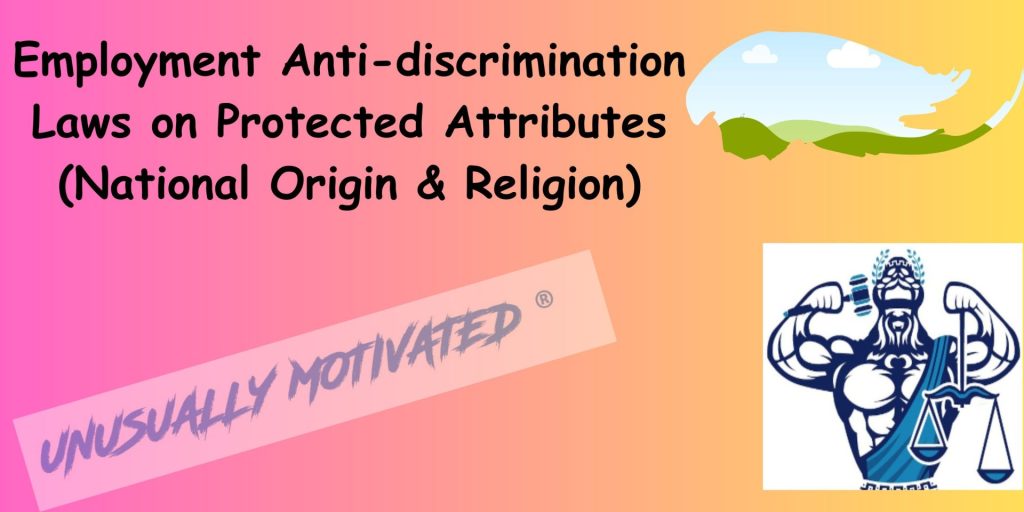Here at the Law Office of Vincent Miletti, Esq. and the home of the #UnusuallyMotivated movement, we take pride as a resilient and dependable legal services firm, providing such services in both a traditional and online, web-based environment. With mastered specialization in areas such as Employment and Labor Law, Intellectual Property (IP) (trademark, copyright, patent), Entertainment Law, and e-Commerce (Supply Chain, Distribution, Fulfillment, Standard Legal & Regulatory), we provide a range of legal services including, but not limited to traditional legal representation (litigation, mediation, arbitration, opinion letters, and advisory), non-litigated business legal representation and legal counsel, and unique, online legal services such as smart forms, mobile training, legal marketing, and development.
Still, here at Miletti Law®, we feel obligated to enlighten, educate, and create awareness, free of charge, about how these issues and many others affect our unusually motivated® readers and/or their businesses. Accordingly, to achieve this goal, we have committed ourselves to creating authoritative, trustworthy, & distinctive content. Usually, this content is featured as videos posted on our YouTube Channel https://www.youtube.com/channel/UCtvUryqkkMAJLwrLu2BBt6w and blogs that are published on our website WWW.MILETTILAW.COM. With that, the ball is in your court and you have an effortless obligation to subscribe to the channel and sign up for the Newsletter on the website, which encompasses the best way to ensure that you stay in the loop and feel the positive impact of the knowledge bombs that we drop here!
As the authoritative force in Employment Law, it only seemed right to introduce one of the many upcoming series in which we introduce a variety of topics that looks to educate and deliver in a manner that only Miletti Law® can. To that end, this blog is Part VII of our series on “Best Practices for Reducing Litigation Risks when Hiring from Competitors.” In Part VI, we hammered on how to understand and determine “Potential Claims from Former Employers,” as another step that employers may take in an attempt to minimize and mitigate the risk of litigation for hiring from a competitor. Regarding this step, we mentioned that if a court determines that a hiring employer either unfairly benefited when a new hire violated their post-employment restrictive covenants or participated in such a violation, then it could be liable under several legal theories. Accordingly, a hiring employer may face a number of causes of action that include (1) employee raiding, (2) unjust enrichment, (3) violation of trade secret statutes, (4) misappropriation of trade secrets, (5) unfair competition, (6) tortious interference with prospective economic advantage, and (7) tortious interference with contract.
As a continuation of our discussion, we now move this discussion forward by hammering on how to “Create Institutional Protections,” which is another thing the hiring employer may have to consider in an attempt to avoid, minimize, and/or mitigate the risk of litigation for hiring from a competitor.
Hiring from Competitors – Creating Institutional Protections
In addition to the steps and issues of consideration discussed in the past few blogs, hiring employers should consider guarding against potential inadvertent or intentional breaches by creating institutional protections, which may help to reduce the risk of restrictive covenant litigation. At times described as “ethical walls,” these institutional protections comprise an integral part of ensuring employee compliance and conduct in the workplace. As part of creating them, a hiring employer may:
- Assign the hire to a non-competitive department of the business awaiting the expiration of a post-employment restriction.
- Prohibit the hire from engaging in business activities and matters that would make them inevitably disclose trade secret(s) and/or use confidential information belonging to the former employer.
- Exclude the hire from meetings or pitches that involve prospects or clients of the business’s competitor and former employer.
- Prohibit the hire from engaging in business activities that the former employer and business’s competitor would deem unfair competition.
- Take and implement measures that bar the candidate from business projects and undertakings that involve trade secrets deals, dealing with prospective clients, or handling confidential information for which they might inevitably reveal, disclose, or use a former employer’s competitively valuable information.
- Exclude the hire from all communication forums, such as E-mail lists, where such matters are discussed.
Nonetheless, hiring employers should understand that taking such measures and creating these institutional protections is no guarantee that a former employer would not take legal action. However, by demonstrating to a court that the hiring employer took reasonable measures, the same would provide a compelling defense if the former employer takes legal action and, accordingly, minimize risk and chances that the new hire will breach existing restrictive covenants.
In Part VIII of this series and our blog titled “Hiring from Competitors – Ensuring Employee Left Without Incident,” we will hammer on how to determine that the former employee left their former employer without incident, which is another crucial thing a hiring employer should do to avoid, minimize and/or mitigate the risk of litigation for hiring from a competitor.
In the meantime, stay tuned for more legal guidance, training, and education in other series in progress. In the interim, if there are any questions or comments, please let us know at the Contact Us page!
Always rising above the bar,
Isaac T.,
Legal Writer & Author.
 Professional Legal & Business Services And Representation - English & Espanol!
Professional Legal & Business Services And Representation - English & Espanol!

 314-648-2586
314-648-2586 CALL US NOW
CALL US NOW







